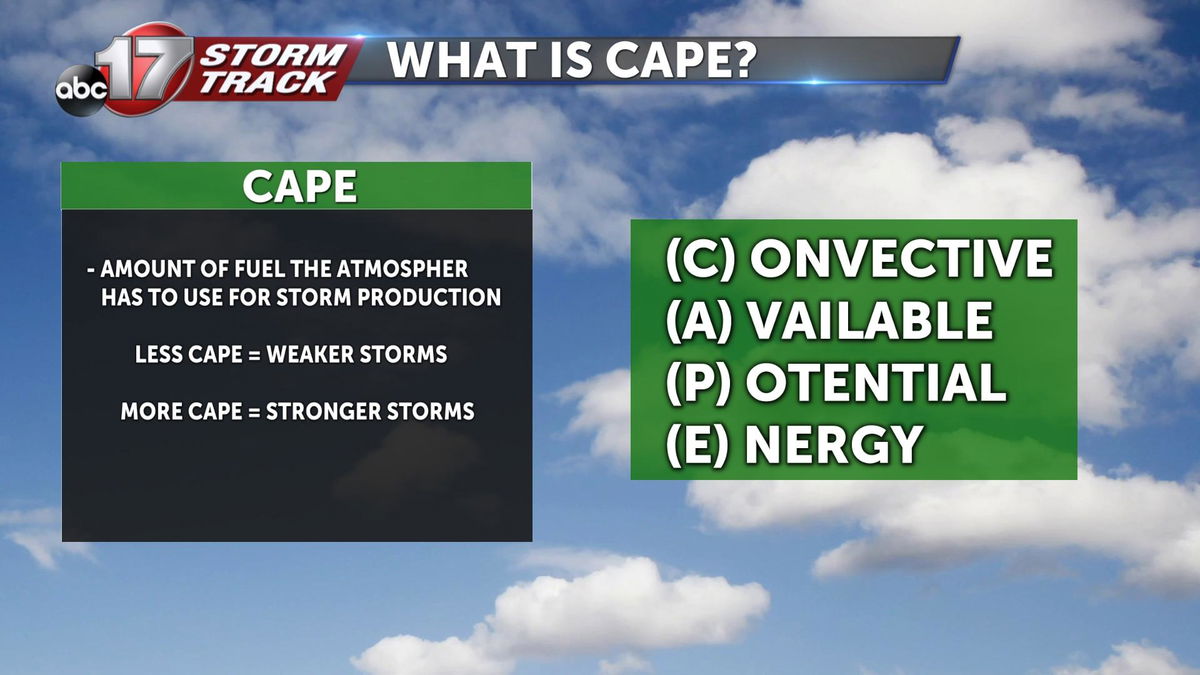A look into instability and how it drives storms
There are many things that impact the growth and strength of a thunderstorm. The three main areas are lift, moisture, and instability. One of the most important key elements is instability. Instability occurs when warmer air rises. This is often expressed quantitively as positive CAPE.

CAPE values are measured in Joules per Kilogram. The more CAPE the atmosphere has, the greater the chance for stronger storms paired with the other two ingredients of moisture and lift. How is CAPE formed?

CAPE forms when the sun warms up the surface of the earth. This heating then causes the air just above the surface to rise. This warmer air continues to rise until it finally is able to cool and condense in the atmosphere to form a cloud. CAPE allows the atmosphere to metaphorically charge up. Amounts of CAPE can be seen as large or small depending on the time of the year. 1,000 J/ Kg during the summer is often not looked at as excessive. However, this same amount in the winter is alarming and unseasonal causing for more concern for strong to severe storms.

From 1979-2021 data has been collected depicting the amount of days where CAPE values have either equaled or surpassed 1000 J/Kg. Data depicts that the eastern half of the United States has shown a large increase in days where more CAPE has been present. On average, Central Missouri has seen 10 days a year more than from 1979 where CAPE has equaled or surpassed the 1000 J/Kg threshold. This leads to more days where the threat of stronger to severe storms can be present. Adversely, just above and to the east of the Rocky Mountain range, days with increased CAPE have declined.
